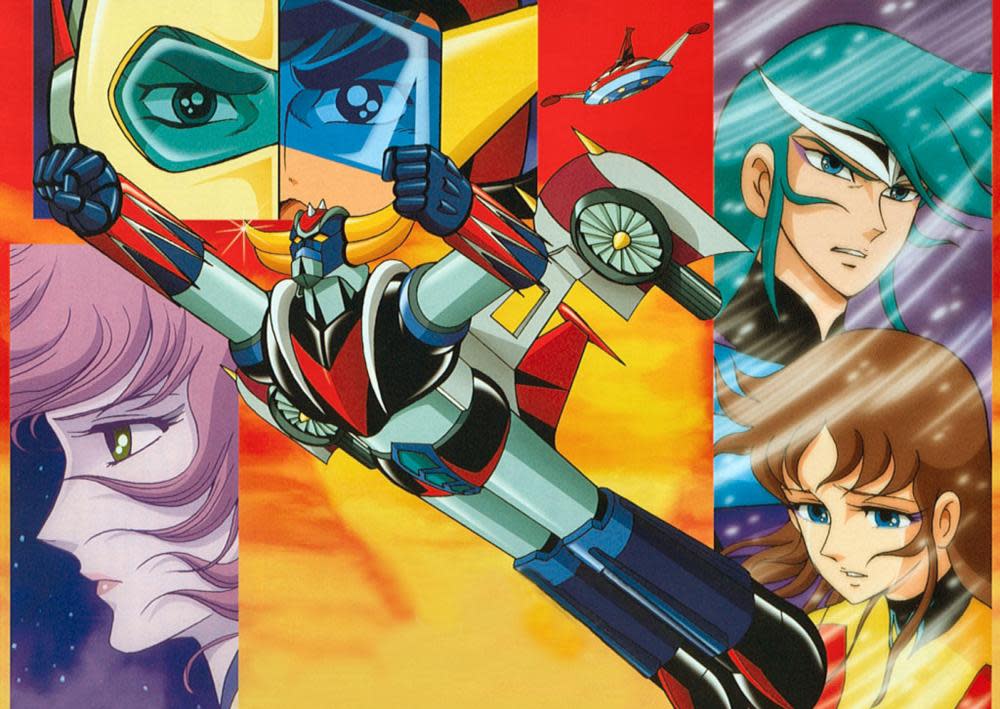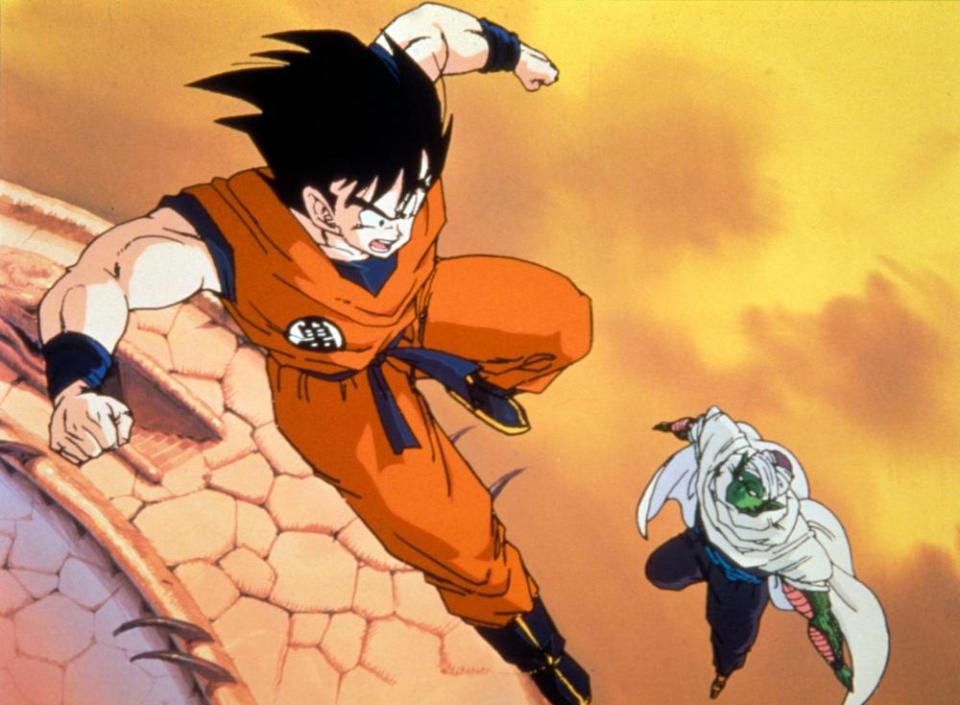Manga-nifique! How France became obsessed with Japanese anime

You might say that Vincent van Gogh was one of the first Japanese pop-culture otaku (geeks) in Europe. With the 19th-century japonisme craze in full swing, he coveted ukiyo-e woodblock prints like modern-day collectors hoard rare manga. Japanese art deeply influenced his work, from his flattening of perspective to his bold lines. He went to the south of France hoping to encounter the same radiant nature and spiritual freshness that figured in his east-Asian fantasia. Upon seeing Katsushika Hokusai’s The Great Wave Off Kanagawa – a supposed inspiration for his own The Starry Night – he raved to his brother Theo in a letter: “The waves are claws, the boat is caught in them, you can feel it.”
The new animation Blind Willow, Sleeping Woman, by France-based animator Pierre Földes, shows that the French love affair with Japanese visual arts is still throbbing. Anime and manga are a worldwide cultural force but nowhere more so than France – an unbelievable 55% of comics sold there in 2021 were manga, according to consumer research body GfK. A beguiling mashup of six Haruki Murakami short stories set in the aftermath of the 2011 Tōhoku earthquake, Blind Willow, Sleeping Woman emerged foremost from Földes’s own first contact with Japanese literature as a teenager. “I loved the fact the style of storytelling was so different to the west,” says the director. “It’s more contemporary, less structured. Here, everything is very structured, with a beginning and end. The story goes from here to there, through different moments of emotion. I’m not so much into that.”
Related: Blind Willow, Sleeping Woman review – Murakami’s surreal tales around a Tokyo earthquake
So Földes freestyled his way through Murakami, picking the material that chimed: story threads about a drifting Tokyo salaryman whose wife leaves him “because living with you is like living with a chunk of air”; her freaky hotel encounter years earlier; a banker’s alliance with a talking frog against the giant subterranean, earthquaking-causing worm. Choosing these parts “like delicious cakes in a patisserie”, Földes blends them into an existential spiral that is somehow still perfectly Murakamian in its palette-cleansing effect. The limpid animation helps; it was drawn over a live-action version, inspired by the harder-edged Japanese movements that fly in the face of Disney fluidity.
Földes is at the arthouse end of the second coming of Japanese pop culture in France, which began in the late 1970s. This time, instead of Mt Fuji, boozy geishas and melancholic peasants, it was giant robots, Corgi bounty-hunters and tumorous apocalyptic psychics. After a few unsuccessful attempts to introduce anime to France in the early 1970s, the arrival in 1978 of mecha (ie robot) cartoon Goldorak on A2, one of the country’s three public TV stations, was the breakthrough. Featuring the eponymous Swiss army knife of a transforming robot, it quickly become a phenomenon, getting its own Paris Match cover, and opened the door for a deluge of anime to hit French children’s TV.

Spurred on by Goldorak, others had bigger ambitions than just imports. Jean Chalopin’s film production company DIC decided in the mid-70s to pivot to producing children’s TV series. With limited animation facilities available in Europe, Chalopin – still only in his mid-20s – scoured Asia for the production capacity he needed to create serial episodes. Like most of France, he knew little about Japan’s powerhouse comics and animation industry, but when he saw it he knew it was the answer to his problems. As he puts it today: “Aux innocents les mains pleines.” (Fortune favours the innocent.) Despite speaking no Japanese at the time, he set up a subsidiary company in the country to hire animators for what became two legendary Franco-Japanese collaborations: Ulysses 31 and The Mysterious Cities of Gold.
Despite France – with its long bande dessinée (BD) tradition – being fertile territory for a Japanese invasion, Chalopin still had to satisfy the public TV channels’ educational remit in order to persuade them to put out his series. Hence the choice of The Odyssey as the source material for his 31st century-set science-fiction version: “We did a story that was Goldorak-ish in a universe that was French-acceptable. And Cities of Gold used the same kind of cultural alibi.” (Now an investor in the Bahamas, he actually looks rather like his russet-haired Ulysses.) The Japanese designers and animators were eager to work on such exotic material, and brought their dynamic style to both panoramic, almost psychedelic sagas.
Broadcast in France in 1981 and 1983 respectively, later sold widely around the world and allowing DIC to produce for the US market, Chalopin believes Ulysses 31 and The Mysterious Cities of Gold shook up western animation: “If you look at what Hanna-Barbera or Filmation were doing at the time, the ‘camera’ was always fixed, and the character moves in front of it. Because in American animation, the camera was still, they did 12 frames a second. For budget reasons, the Japanese generally did six or eight – but to compensate they did realistic-type camera moves. ‘Funny angle’, they called it in Japanese.”
Meanwhile, outlandish import anime with that kinetic vibe was taking over French TV, under the auspices of competing CBBC-style kids’ omnibuses. Chief among them was Club Dorothée on TF1, fronted by wholesome singer-actor Frédérique Hoschedé (known as Dorothée) from 1987, who had been poached during this anime boom from the A2 children’s umbrella that put out Goldorak. During the late 80s and early 90s, Club Dorothée kept French youth weaned on a steady diet of Japanese mayhem: the likes of mythological romp Les Chevaliers du Zodiaque (Knights of the Zodiac), high-school superhero fantasy Sailor Moon and what spiralled into a generational phenomenon, Akira Toriyama’s Dragon Ball.

But the schoolyard stampede caused a moral backlash – particularly against edgy fare like the Mad Max-inspired Ken le Survivant (Fist of the North Star) – among those who feared Japanimation was corrupting French youth. Future presidential candidate Ségolène Royal was among its most prominent critics, lambasting among other things its recidivist violence in her takedown book Le Ras-le-Bol des Bébés Zappeurs (Fed Up of Baby Channel-Zappers).
Manga expert Nicolai Chauvet remembers the furore: “The kids had become hooked on this drug. It was pure serotonin, the kids needed their shot of Dragon Ball. And she politicised it to stop French kids going crazy because of Japanese cartoons. So then there was this deprogramming. Anime disappeared almost completely from Club Dorothée, and was replaced by disgusting French sitcoms with ridiculous teenagers having their first kiss.” Club Dorothée shut up shop for good in 1997.
But it was only the end of the beginning for Japanese pop culture in France. Manga in properly bound formats – such as Katsuhiro Otomo’s Akira, hitherto only distributed in throwaway comic form – began arriving en masse in the country in the late 90s. With the Japanese industry at its apex, the riches of five decades of imaginative labours poured into the country. Chauvet, who under the pseudonym Méko is now one of France’s leading collectors, had an even stronger culture shock than Földes: “Manga slapped me in the face. It was even more punk than Franco-Belge comics. The freedom to do whatever you want: I’m going to have some dinosaurs in the midst of some Chinese kung fu thing with daft legends, and stick the Terminator in there too! With humour and drawings that had a surgical, diabolic precision. And all serving the reader, without the illustrator’s ego in the way.”
This hyper-fecundity would sweep Japanese manga to its present supreme position in France; it is currently the world’s biggest manga importer. But the traffic only goes one way. French BD is generally ignored in Japan, and it will be a shock if Blind Willow, Sleeping Woman – like fellow recent Japanese-infused French animations The Red Turtle and The Summit of the Gods before it – makes a splash there. If it wants French-themed content, Japan creates it itself, like the French Revolution drama The Rose of Versailles. “Japan is insular; it takes,” says Chauvet. “They’re open, they’re curious, but they take [what they want]. It auto-nourishes when it comes to pop culture.” Maybe Japanese creators themselves are more reciprocating, though: one of Studio Ghibli’s original touchstones when it was starting out in the 1980s was the surrealism and pointed humour of Paul Grimault’s largely forgotten 1980 animation The King and the Mockingbird.
No one these days would accuse Ghibli of being anything other than an upstanding moral influence on young people – and France unreservedly embraces the breadth and variety of everything Japanese manga and anime has to offer. The pandemic only further intensified manga mania; bought by millennial parents who were the original early adopters keen to share their passion with house-bound offspring. Eiichiro Oda’s One Piece, the fantasmagorically OTT pirate saga, is the bestselling top dog, the successor to Dragon Ball and Dragon Ball Z; Emmanuel Macron, annoyingly down with the kids, likes to slip it into his tweets. With the price for the rights for new titles now sky-high, Chauvet believes the French market could be hitting saturation point. Or then again, maybe not: “We’ve seen it before: the more we’re in crisis, the more teenagers buy manga.”
• Blind Willow, Sleeping Woman is released on 31 March.

 Yahoo Movies
Yahoo Movies 
